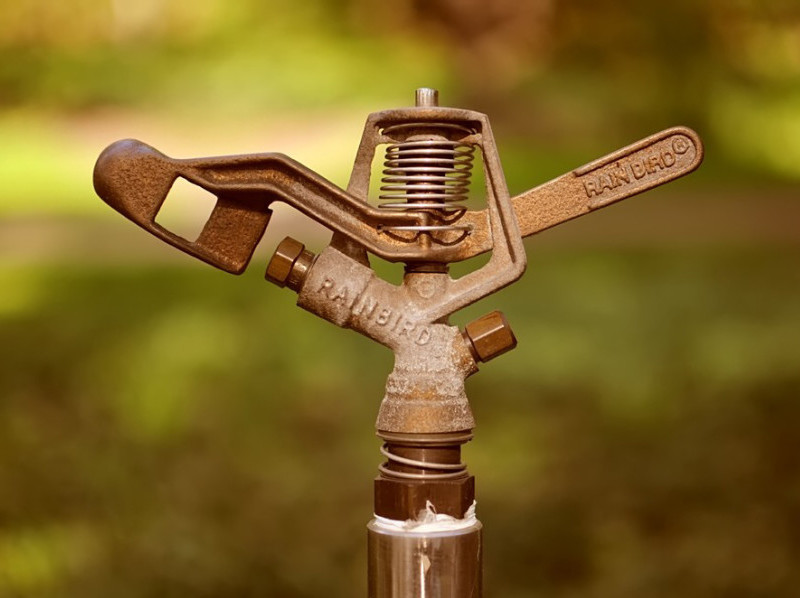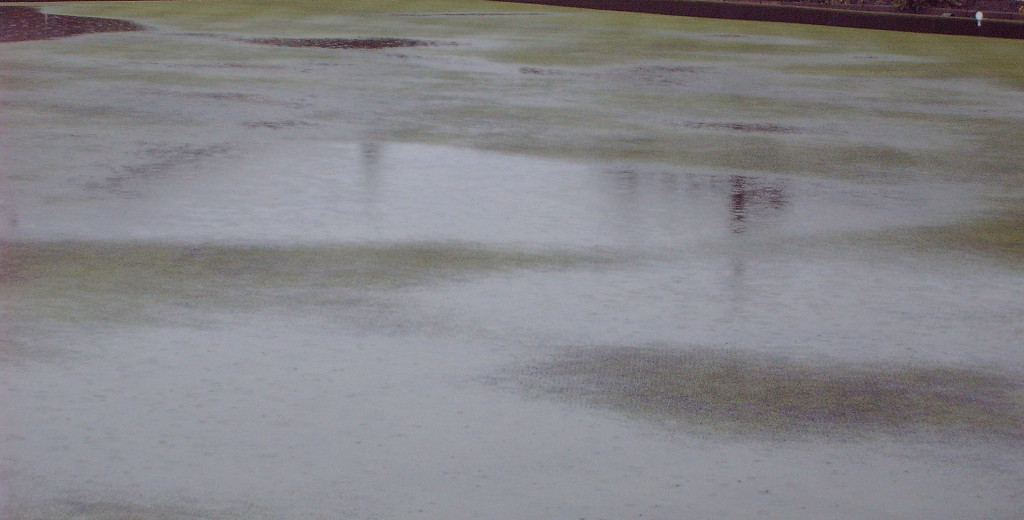Bowling Green Maintenance Diary July
Here we are at the height of summer and the busiest playing time on the bowing green and a busy time for the greenkeeper.
If the weather hasn’t been too hot and water levels are correct, then you should still be seeing steady daily growth which means the mower will be well used this month. If I was restricted to two tips for July they would be keep the mower sharp and keep a close eye on soil moisture.
Mowing
If all is well in the moisture department you will be mowing regularly to keep on top of growth and to maintain green speed and smoothness. This means that the mower must be in tip-top condition. Due to the frequency of use at this time of year it is imperative that the mower is properly cleaned and maintained after each cut. If you are cutting 3 or 4 times a week you will be adding approximately 20 hours of use to the mower, so keep an eye on the level and condition of the engine oil as some mowers need very frequent oil changes; check the manufacturer’s recommended oil and filter change intervals and stick with these for best performance. The last thing you need is a mower that doesn’t want to play on a busy Sunday morning when the local mower mechanic is closed.
The best approach to mower setting for green and mower health is a zero contact setting between blade and cylinder, which requires razor sharp edges and close attention to the angles that are ground into the top and front of the bottom blade. The grinding work to accomplish this will have been carried out in the winter, but it’s important to maintain these edges and angles through the busy summer months, so it might be necessary to have a mid summer check or mini service to ensure everything is spot on. Your local mower mechanic might offer a mobile service of this. Try to avoid back-lapping the cylinder if you can, as the results of this are short lived and it tends to rely on cylinder to blade settings that are over tight. Setting mowers that way can mean that the edges are blunted again quickly and can put a lot of stress on other mower components into the bargain.
Watering
By far the main maintenance item to be aware of this month is of course watering the green. The green loses water fast during hot, dry weather so we need to monitor the balance between what is lost through Evapotranspiration (ET) and and what is replaced by rain and/or irrigation. You might remember from reading Performance Bowling Greens that the best way to keep track of this is to maintain a water balance sheet throughout the year. The water balance sheet is a simple record of what goes in and what comes out in terms water. On average, your green will lose at least 25mm of water per week to ET, which is the combination of losses due to evaporation from the soil surface and transpiration from plants.
If you have any regular trouble spots that dry out more quickly than the rest of the green, you can hand water these with a hose.
Be extra vigilant for Localised Dry Patch and break out the wetting age and hand water applicator if required.

Height of Cut

The mowing height this month will be kept low (4.5mm) as long as soil moisture is able to be maintained and grass growth is vigorous. If there is a marked slow down in growth, which isn’t uncommon at this time with the grasses we grow in the UK, you can reduce mowing frequency accordingly.
During prolonged dry periods, especially if the green starts to show signs of drying out and the grass looks stressed you should raise the height of cut to encourage the plants to bulk up a bit. This will result in deeper rooting, which will help the plants to extract more moisture from the soil. You can also usefully, take the box off the mower and let the grass clippings fly for a few cuts. This acts as a mulch which can help to reduce evaporation of moisture from the soil surface. As long as the surface is dry, the effect on bowls will be minimal.
On the Green
As always you should be taking soil profile samples at least weekly to do the usual checks on soil moisture, thatch build up and rooting. Don’t rely on a moisture meter for this critical work; get a good profile sampler or even a second-hand golf hole cutter for this and take the sample as deep as possible. Once you have the hang of taking and replacing these samples you will be able to do it quickly and replace the sample without leaving a trace on the surface. It’s much better to build up a feel for your soil than to rely on any level of remote technology, so get the soil in your hands regularly!
Before mowing, take the drag or dew brush over the green. This will help preserve any surface moisture by returning it to the soil. This also has the benefit of standing the grass up prior to cutting to help minimise lateral growth, which can have a detrimental effect on green smoothness/trueness.
As long as growth is vigorous, you can safely use the groomer on the mower. Set this above height of cut to gently tease up the leaves prior to cutting. Light verti-cutting twice a month can also continue during periods of good growth and sufficient soil moisture but reduce or stop this in prolonged dry spells as it can have a rapid drying effect on the turf.
Regular sarrel rolling is a useful precursor to irrigation as it allows the water to get into the surface quickly, thus minimising evaporation.
An application of your regular liquid bio fertiliser will help the grass to keep growing steadily. The removal of clippings during mowing depletes the Nitrogen supply fast, so we need to continually supply this during the mowing season.

Localised Dry Patch (LDP)

Keep an eagle eye open for early signs of Localised Dry Patch, although it is usual for this to have shown up before now if it is a problem. During your regular investigations below the surface, be vigilant for areas that look drier than others and take the hand hose to these regularly using the wetting agent applicator on the end if required.
Records
As always record your maintenance for the month as you go, adding photos of anything you think you might want to visually compare from year to year or month to month. Most importantly, make sure you keep your water balance sheet up to date!
As always, remember you’re not on your own with this. You can drop me a line at anytime and even send photos using the HELP! link at the top of the site, or just press the HELP! button below.
Have a great month and see you in August.
John



